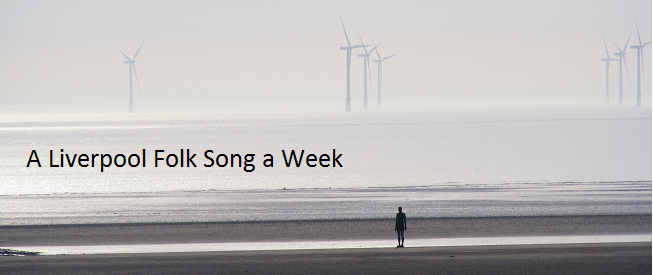Saturday 19 May 2012
49: Go To Sea Once More
A cautionary tale from Mersey shantyman Stan Hugill's Shanties of the Seven Seas. Versions of this song were also collected from American sailors by W.M. Doerflinger, W. Roy Mackenzie and others, and it's been recorded by Jerry Garcia out of the Grateful Dead so perhaps because of that I get the impression that a lot of people think of it as more of an Northern American song - but like many sea songs, it's something that spread from port to port across the world, and this is the version that Hugill says was "very popular with Liverpool seamen". Hugill also remarks on the fact that the tune is somewhat reminiscent of Greensleeves (which I suppose it is) and that this version of the song was a forbitter (i.e. a song for entertainment rather than a work song) "since it had no all-hands-in chorus".
A.L. Lloyd, who recorded versions of this song which he had collected from Wales, writes in the sleeve notes to "Leviathan!": "Who was Rapper Brown, the villain of the piece? Particularly during the latter days of sail, many lodging house keepers encouraged seamen to fall in debt to them, then signed them aboard a hardcase ship in return for the “advance note” loaned by the company to the sailor ostensibly to buy gear for the voyage. Paddy West of Great Howard Street, Liverpool, was well-known for this" (we have, of course, already heard about Paddy West...)
One of the interesting aspects of the song is its reference to the whaling trade: on the Liverpool museums website, Stephen Guy writes that "Today scant remains to remind us of this little-known period which ran parallel with the early growth of Liverpool. One place is Greenland Street, off Jamaica Street in the city centre. The waters off Greenland were among the places the Liverpool whalers hunted lucrative sperm whales and other species valuable for their oil-rich blubber and baleen - whalebone used for making ladies’ corsets (stays). It is likely that Greenland Street got its name because it housed the warehouses, counting houses and offices linked to the whaling industry... Whaling was dangerous, particularly when icebergs were around, and in 1789 it was recorded that four Liverpool whalers were lost. In 1827 only one whaler, The Baffin, was operating full-time out of Liverpool and by 1830 there was no more trade out of the port." The picture I'm using above, "Success to the James of Liverpool" is one of the few known paintings of a whaling ship operating out of Liverpool and dates from c.1810-1820.
In the Roud folksong index, this is #644
Subscribe to:
Post Comments (Atom)


No comments:
Post a Comment